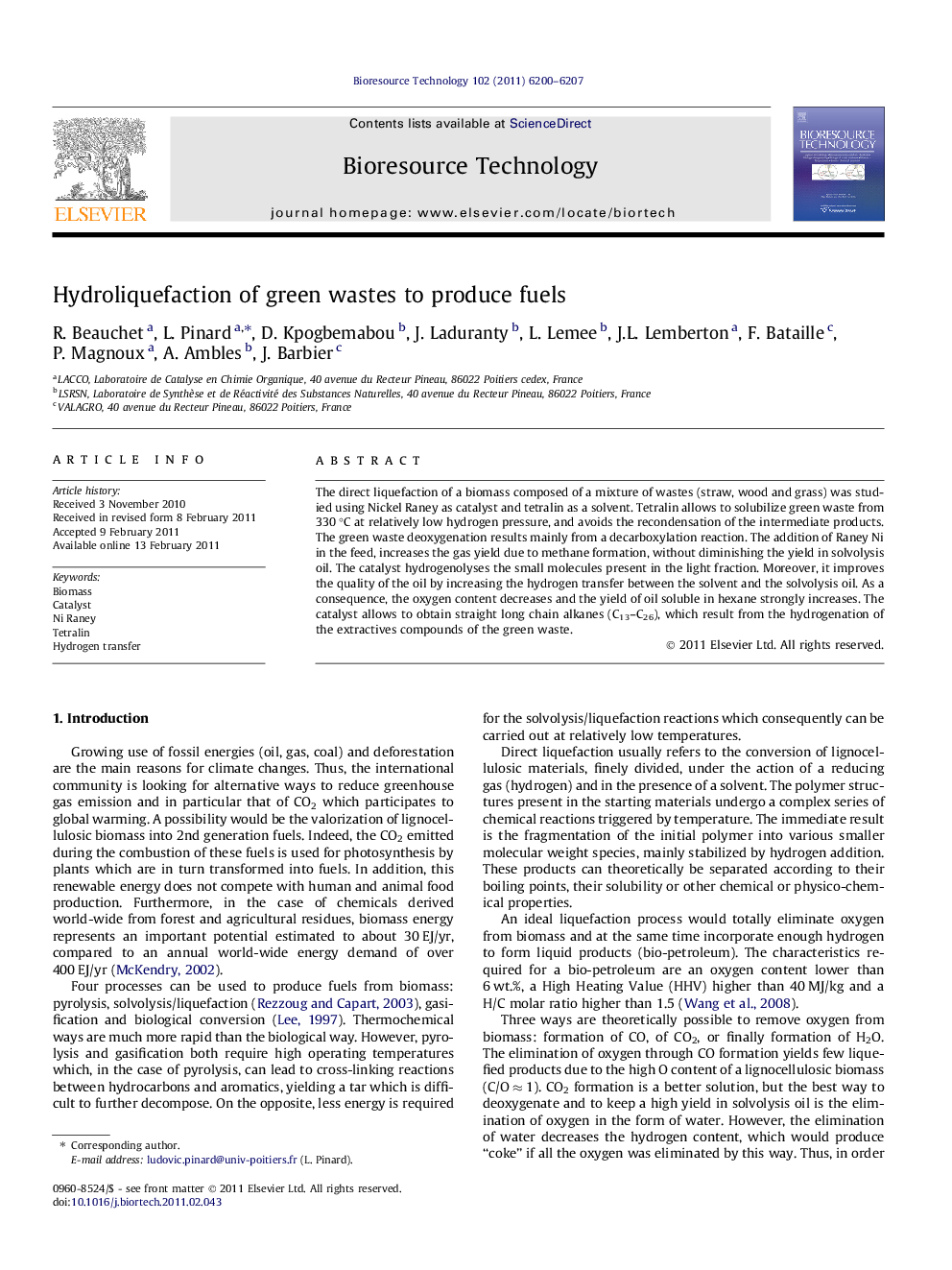| Article ID | Journal | Published Year | Pages | File Type |
|---|---|---|---|---|
| 682022 | Bioresource Technology | 2011 | 8 Pages |
The direct liquefaction of a biomass composed of a mixture of wastes (straw, wood and grass) was studied using Nickel Raney as catalyst and tetralin as a solvent. Tetralin allows to solubilize green waste from 330 °C at relatively low hydrogen pressure, and avoids the recondensation of the intermediate products. The green waste deoxygenation results mainly from a decarboxylation reaction. The addition of Raney Ni in the feed, increases the gas yield due to methane formation, without diminishing the yield in solvolysis oil. The catalyst hydrogenolyses the small molecules present in the light fraction. Moreover, it improves the quality of the oil by increasing the hydrogen transfer between the solvent and the solvolysis oil. As a consequence, the oxygen content decreases and the yield of oil soluble in hexane strongly increases. The catalyst allows to obtain straight long chain alkanes (C13–C26), which result from the hydrogenation of the extractives compounds of the green waste.
